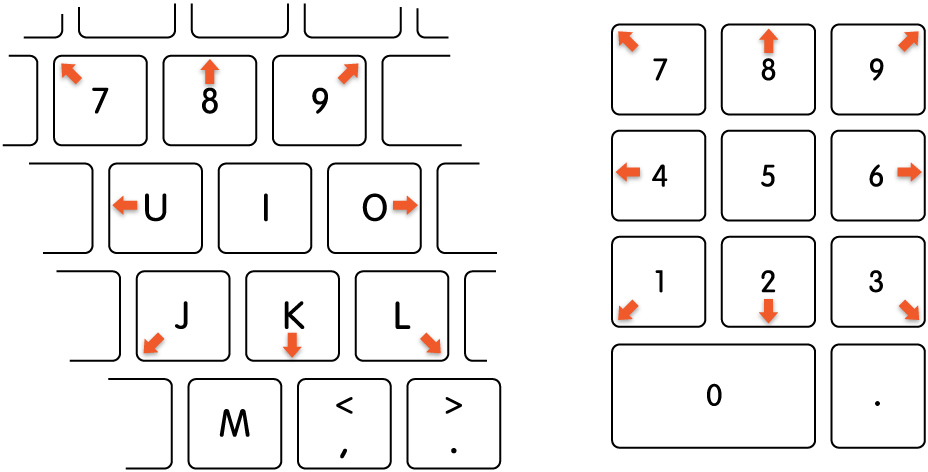
Control the pointer using Mouse Keys on Mac
When you turn on Mouse Keys on your Mac, you can move the mouse pointer and press the mouse button using the keyboard or a numeric keypad.
The following illustration shows the keys to use on a keyboard (the keys on the left) and on a numeric keypad (the keys on the right) when Mouse Keys is on.

Note: When Mouse Keys is on, you can’t use the keyboard or a numeric keypad to enter text.
Move the mouse pointer:
With a numeric keypad: Use the 7, 8, 9, 4, 6, 1, 2, 3 keys on the keypad.
With the keyboard: Use the 7, 8, 9, U, O, J, K, L keys.
Click a mouse button:
With a numeric keypad: Press 5 on the keypad.
With the keyboard: Press I.
Press and hold the mouse button:
With a numeric keypad: Press 0 (zero) on the keypad.
With the keyboard: Press M.
Release the mouse button:
With a numeric keypad: Press “.” (period) on the keypad.
With the keyboard: Press “.” (period).
To quickly turn Mouse Keys on or off using the Accessibility Shortcuts panel, press Option-Command-F5 (or if your Mac or Magic Keyboard has Touch ID, quickly press Touch ID three times).
You can also use keyboard shortcuts, assistive switches, or facial expressions to perform mouse actions, such as left, right, or double clicks. Choose Apple menu 
![]() , click Pointer Control, click Alternate Control Methods, then select Enable alternate pointer actions. To customize the actions, click Options.
, click Pointer Control, click Alternate Control Methods, then select Enable alternate pointer actions. To customize the actions, click Options.